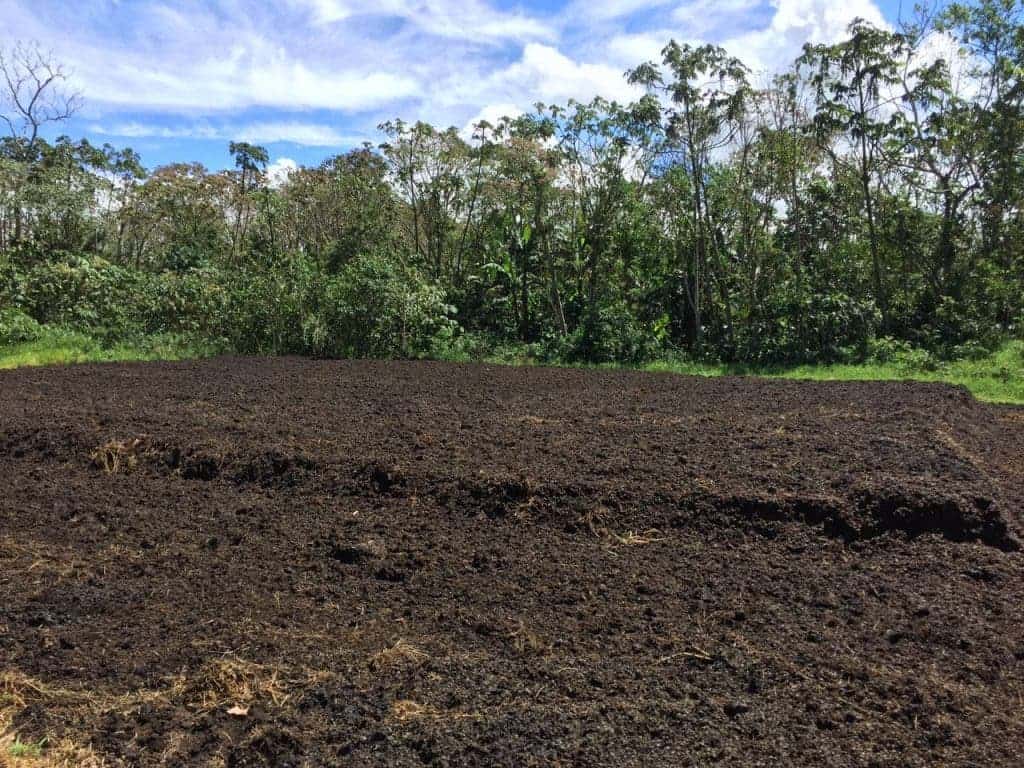That caffeine boost that kickstarts your day may also help restore degraded land and forests, according to a new study.
Researchers dumped 30 dump truck loads of coffee pulp (a waste product of coffee production) on a piece of degraded land in Costa Rica, bringing it back to life with impressive results.

Degraded land is an umbrella term that refers to plots of land with low carbon stocks — in other words, with low productivity. Often, the term is used for areas degraded by human activity. These soils typically have minimal tree cover and an absence of peat, so they do not contain or sequester as much carbon as natural forests do.
Around 12% (two billion hectares) of the earth’s terrestrial surface is degraded, with a 2007 study noting that annual costs of land degradation due to land use and land cover change are about $231 billion per year.
Land restoration is critical to tackling some of the world’s biggest challenges, such as global food security, access to clean water, soil erosion, climate change, loss of biodiversity, and desertification. Politicians are also starting to take notice of this issue, and through initiatives such as the Bonn Challenge and the Initiative 20×20, they’ve have set ambitious targets on soil restoration.
But solutions are challenging.
Nutrient-rich agricultural by-products, including fruit peels, pulp, and other non-market vegetable material, have been proposed to help tropical forest recovery on degraded land. Nevertheless, trials in a restoration context have been limited so far. The most well-known study was done in Costa Rica in 1988 with orange waste in a degraded pasture.
Now, researchers are looking at coffee pulp as a potential cost-effective way to address degraded land.
“Adding a nutrient-rich layer, like orange peels or coffee pulp, can overcome some major barrier to natural forest recovery. Unlike planting trees, this approach creates conditions in which forests can establish in a more natural way and be much more cost-effective. So, the potential for using organic waste for restoration is very high,” Rebecca Cole, lead author of the new study, told ZME Science.
Cole and her team of researchers focused on the use of coffee fruit pulp. The processing of coffee beans involves the separation of the seed from the components of the fruit, including the skin, the pulp, and the mucilage. The pulp, which comprises more than 50% by weight of the coffee harvest, is treated as a waste product and heaped into storage lots where it is left to decompose.
But there’s actually much more than could be done with the pulp. Coffee is rich in carbohydrates and crude protein and when processed, forms a valuable compost. With this in mind, the researchers decided to spread the pulp on degraded land in Costa Rica, marking out a similar-sized area without coffee pulp as a control. The results were impressive.
“Adding a 1/2-meter-deep layer of coffee pulp killed the aggressive pasture grass that prevents tree seedlings from establishing. Native herbaceous vegetation and tree seeds that arrived by wind or were dispersed by animals like birds and bats quickly established on the surface of the layer. In only two years, these naturally establishing trees grew and formed a new forest.,” Cole added.
The researchers started the experiment in 2018, selecting two areas of the same size in Costa Rica but leaving one as a control. They analyzed the soil samples for nutrients before applying the coffee pulp and again two years later. They also kept a record of the species present in the land, the percentage of forest ground cover, and the size of woody stems – even using drones to record the canopy cover.
While excited about the results, Cole argued further research will be necessary to test the use of coffee pulp to aid forest restoration. The study was done only at one large site, so further testing will be needed to see if this strategy works at a broader range of conditions. A limitation of using coffee pulp is that its use its limited to relatively flat and accessible areas where the material can be delivered.
“Understanding where coffee pulp is most likely to help forest grow back will enable it to be used more efficiently. Understanding the effects that adding coffee pulp has on soils over time will also help us understand how the new forests will develop. We hope that this will lead to more testing of other agricultural by-products for restoration,” Cole told ZME News
The study was published in the journal Ecological Solutions and Evidence.


